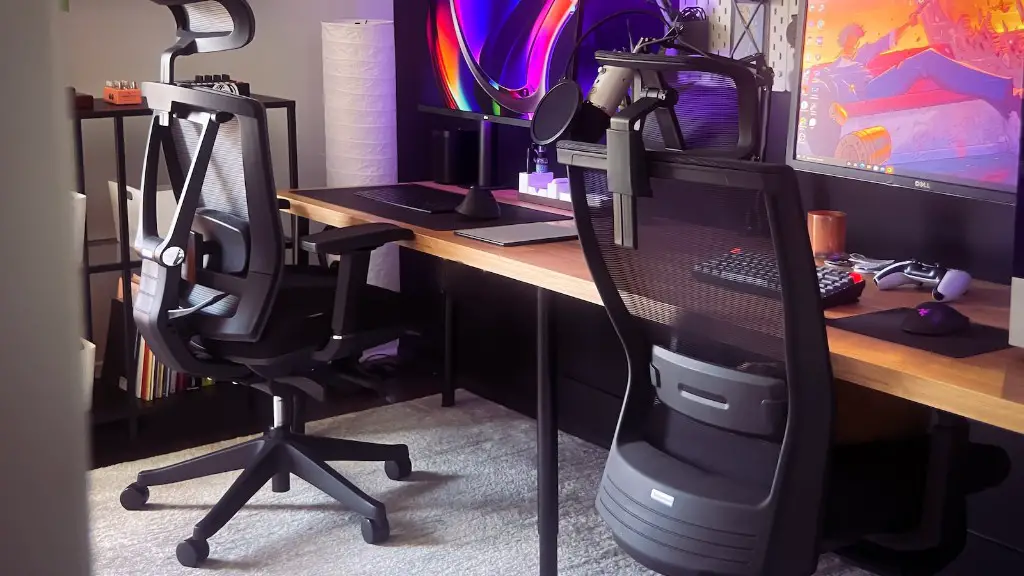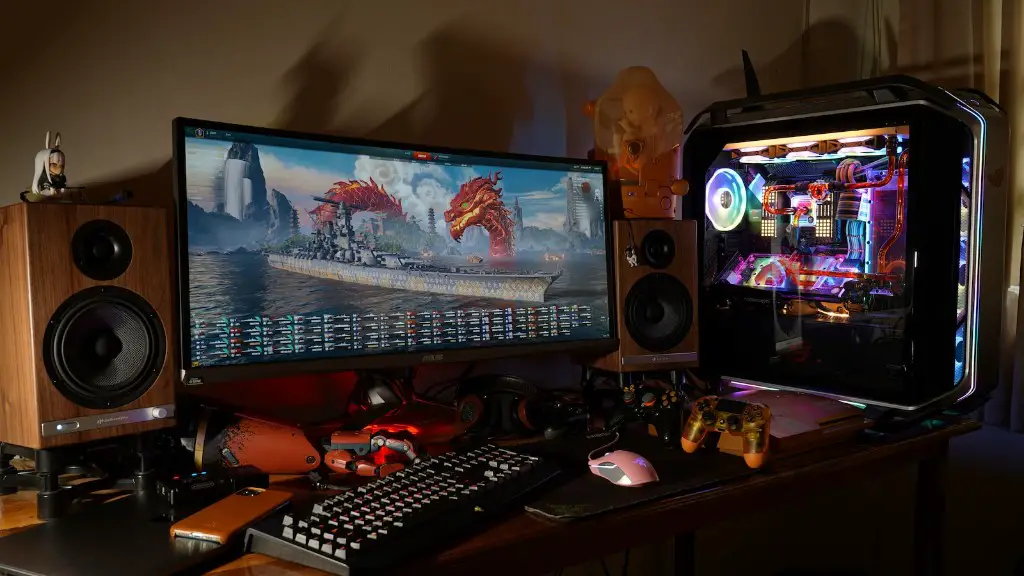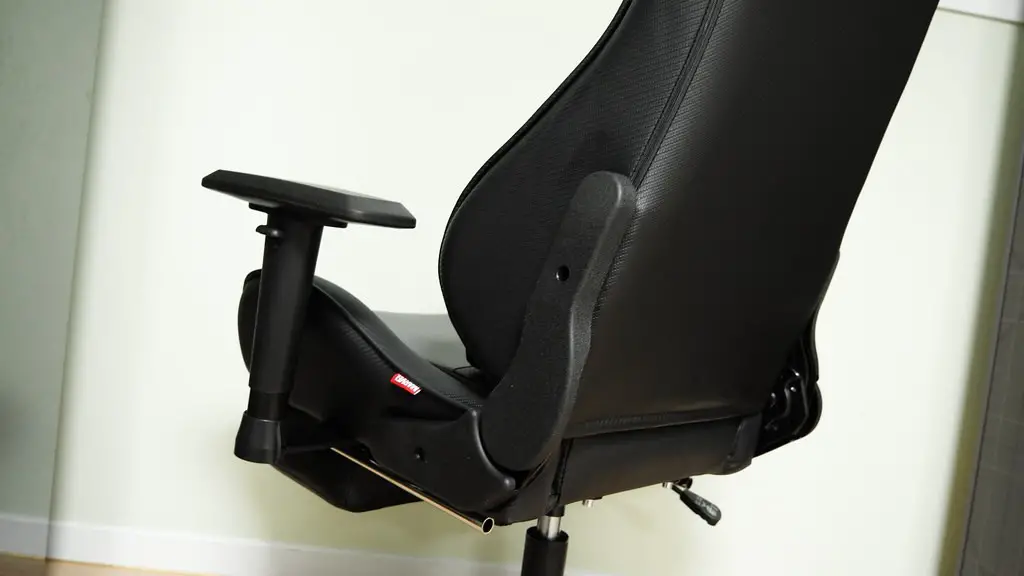Choosing the right gaming monitor is essential to any gamer. With its increasing resolution and refresh rate, the right monitor can drastically change the user’s gaming experience. When looking for a gaming monitor, there are several features that you should consider. Firstly, the refresh rate. Refresh rate determines how quickly the monitor can update an image. A refresh rate of at least 60Hz is recommended for gaming. Secondly, response time, which determines how quickly the monitor can change pixels from one shade of color to another. A lower response time means fewer ghosting or blurring. Thirdly, screen size. Generally, the bigger the screen, the more immersive the experience. In addition, look for a monitor with better resolution, wide viewing angles, and contrast ratio. Finally, compatibility. The monitor must have proper inputs such as DisplayPort and HDMI.
Refresh Rate
Refresh rate is an important factor to consider when buying a gaming monitor. A higher refresh rate means a smoother and more responsive gaming experience with fewer motion blur and stutter during intense gaming sessions. The most common refresh rate is 60Hz, but 120Hz and 144Hz are becoming increasingly popular with gamers. High refresh rate monitors also feature FreeSync or G-Sync, which help reduce image artifacts and improve the gaming experience.
To choose the monitor with the best refresh rate, consider the type of games you are playing. If you are playing competitive FPS games, a 144Hz monitor may be best. On the other hand, if you are playing single-player games or non-competitive games, a 60Hz monitor may be sufficient. Keep in mind, if you are using a console, the console’s refresh rate cannot exceed the monitor’s refresh rate.
In conclusion, choose a gaming monitor with the highest refresh rate that your budget and computer can handle for a smooth and immersive gaming experience.
Response Time
Response time measures the speed of a display’s pixel transition from one color to another. Lower response time means less motion blur or ghosting during gaming. A refresh rate of 4-5 ms is considered good. Look for a monitor with an IPS panel if you’re looking for deep color contrast, better viewing angles, and wider color gamut. VA panels are another good alternative, but they have slightly slower response times than IPS panels.
Remember, higher response time may cause ghosting and motion blur, which can reduce the gaming experience. This is especially important for fast-paced gaming such as FPS, RTS or fighting games. If you are playing these types of games, a lower response time is essential for a better gaming experience.
In conclusion, look for a monitor with a low response time, an IPS panel, and the desired refresh rate for a smooth and immersive gaming experience.
Screen Size
Screen size is important when choosing the right gaming monitor. The larger the monitor, the more immersive the gaming experience. A 27-inch monitor is a good size for most gamers, but if you want to really immerse yourself in the game, look for a 32-inch monitor. Alternatively, if space is an issue, a 24-inch monitor may be right for you.
Remember, if you are using a console, the console must support the maximum resolution of the monitor. For example, if you are using a PlayStation 4 Pro, you will need a monitor with at least a 1080p resolution. If you are using an Xbox One S, you will need a monitor with at least a 720p resolution. Keep these things in mind when shopping for a gaming monitor.
In conclusion, choose a monitor with the right resolution and screen size that your budget and computer can handle for a full and immersive gaming experience.
Resolution
The resolution of a gaming monitor is also an important factor to consider. Most monitors nowadays have a resolution of 1920×1080 or higher. For intense gaming, look for a monitor with at least a 1440p resolution as it will provide more detail, sharper visuals, and a more immersive gaming experience. If your computer can handle it, it’s best to go with a 4K monitor as they offer the highest resolution and best image quality.
Keep in mind, the higher the resolution, the lower the frames per second. This means that if you are playing games with demanding graphics, you may need a powerful graphics card to run these games at a higher resolution. Make sure that your computer can handle the higher resolution before buying a 4K monitor.
In conclusion, choose a gaming monitor with the desired resolution, screen size, and refresh rate that your budget and computer can handle for sharp visuals and smoother gaming.
Viewing Angles
When shopping for a gaming monitor, the viewing angles are also an important consideration. The wider the viewing angle, the better the image quality on the monitor. Most monitors have viewing angles of up to 178 degrees, which is a good choice for most gamers. But if you are looking for an even better viewing experience, look for a monitor with viewing angles of up to 200 degrees.
Remember, viewing angles are especially important if you’re using the monitor at an angle or with multiple people. For a better viewing experience in these scenarios, choose a monitor with wider viewing angles.
In conclusion, choose a gaming monitor with wide viewing angles, lower response time and high refresh rate that your budget and computer can handle for the best gaming experience.
Contrast Ratio
Contrast ratio measures the difference between the lightest and darkest shades of color that a monitor can display. For a gaming monitor, look for a contrast ratio of at least 1000:1 for deep, rich color detail and better visuals. Some monitors even have a contrast ratio of up to 2000:1, which is great for gaming, movies, and image editing.
In conclusion, choose a gaming monitor with a good contrast ratio to get the most out of your gaming experience.
Compatibility
Finally, consider the compatibility of the monitor with your hardware. If you are using a desk-mounted monitor, make sure the monitor has a VESA mount adapter. Also, check the type of inputs the monitor has, such as DisplayPort, HDMI, and DVI. Most modern gaming monitors have at least one to two of these inputs, but make sure to check before buying.
You should also consider the monitor’s audio output when using a desktop PC. If the monitor has a built-in audio output, this can save you some money on buying a separate sound card. Also, check the monitor’s power supply, as some monitors require a specific power cable.
In conclusion, choose a gaming monitor with the proper inputs, output, and power cable that is compatible with your hardware for the best gaming experience.


